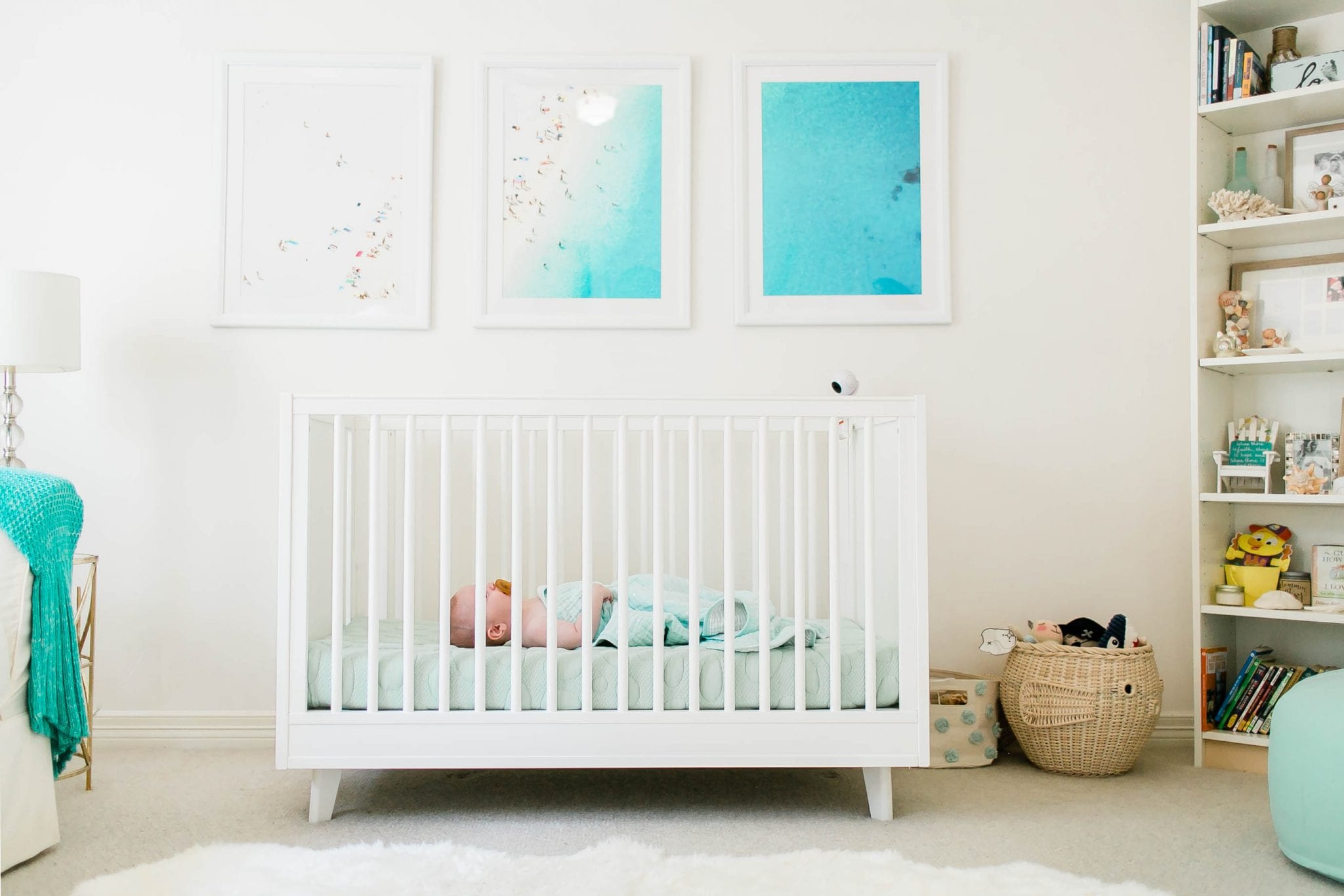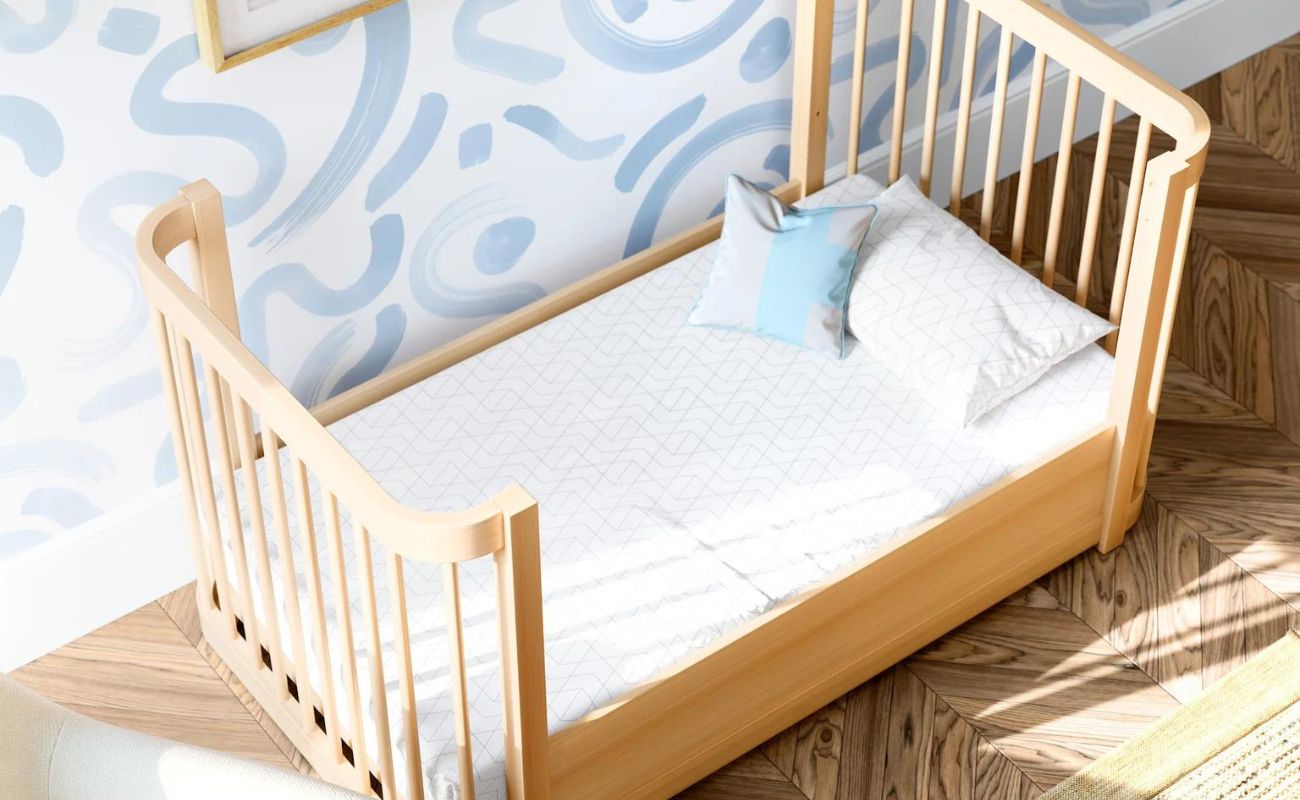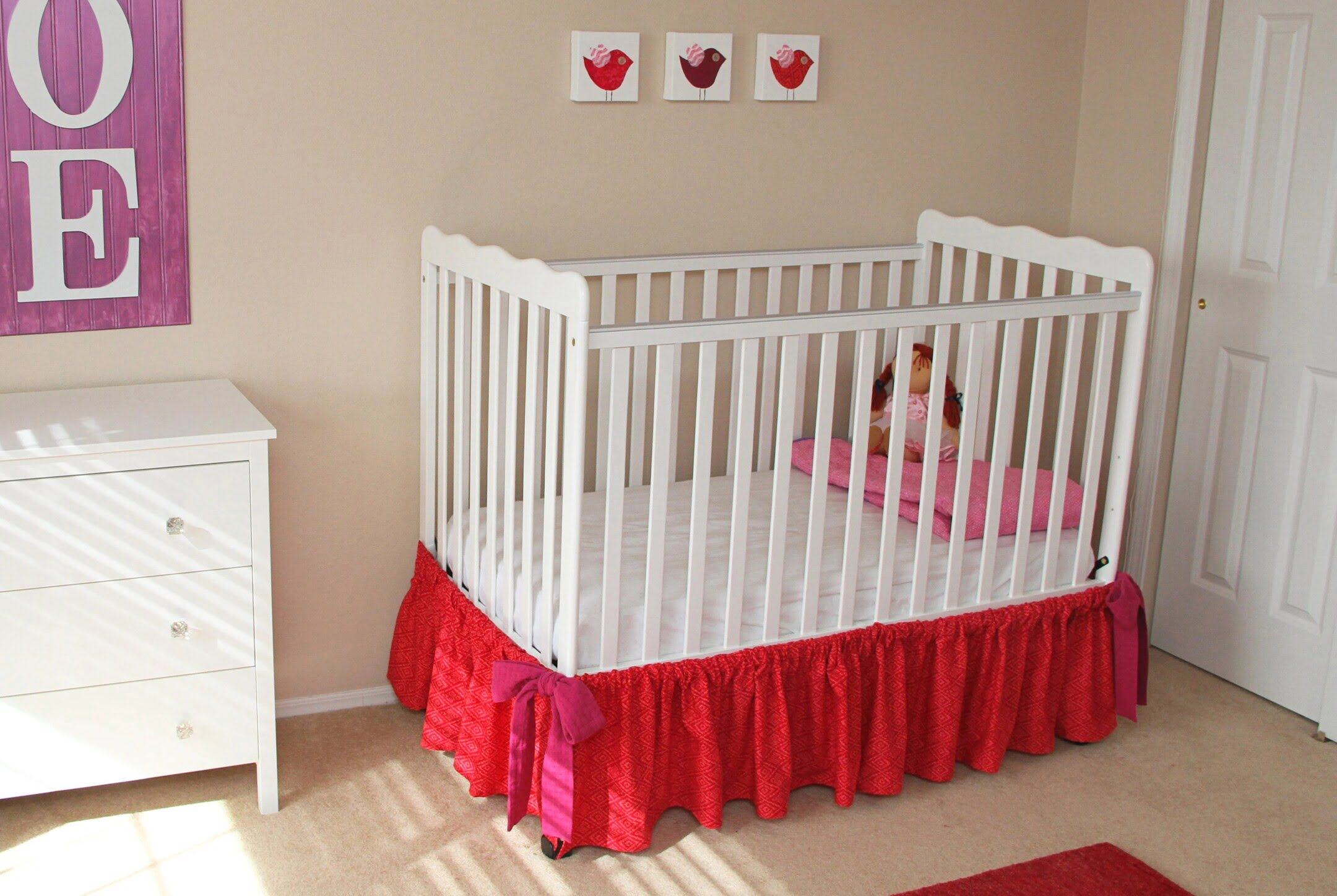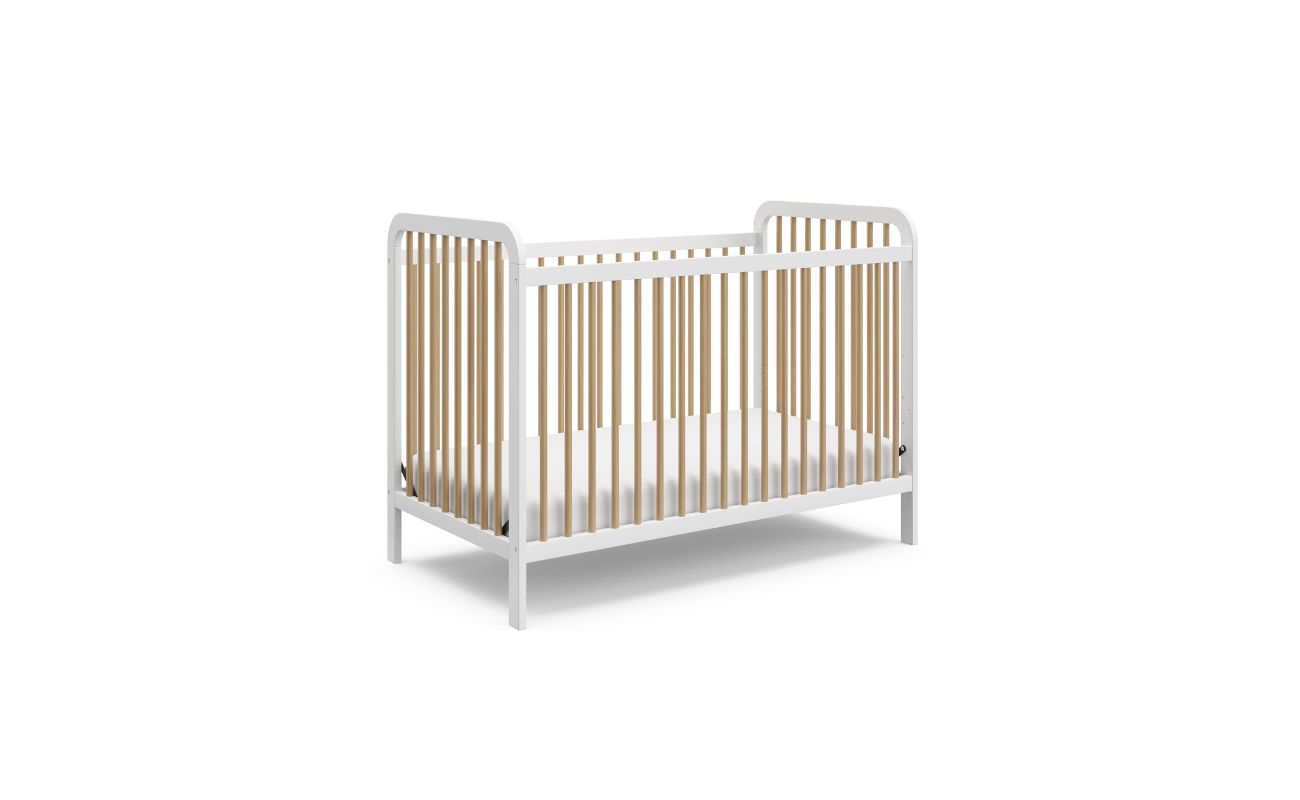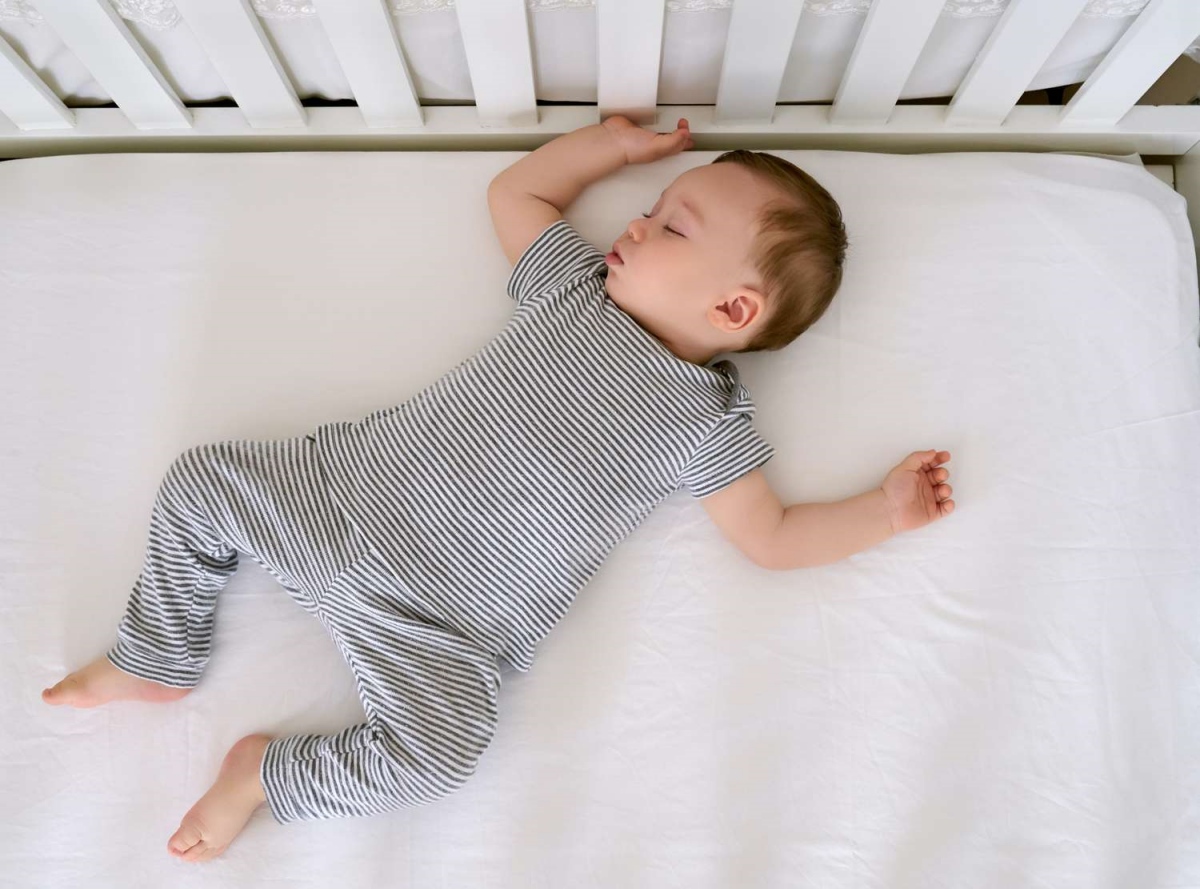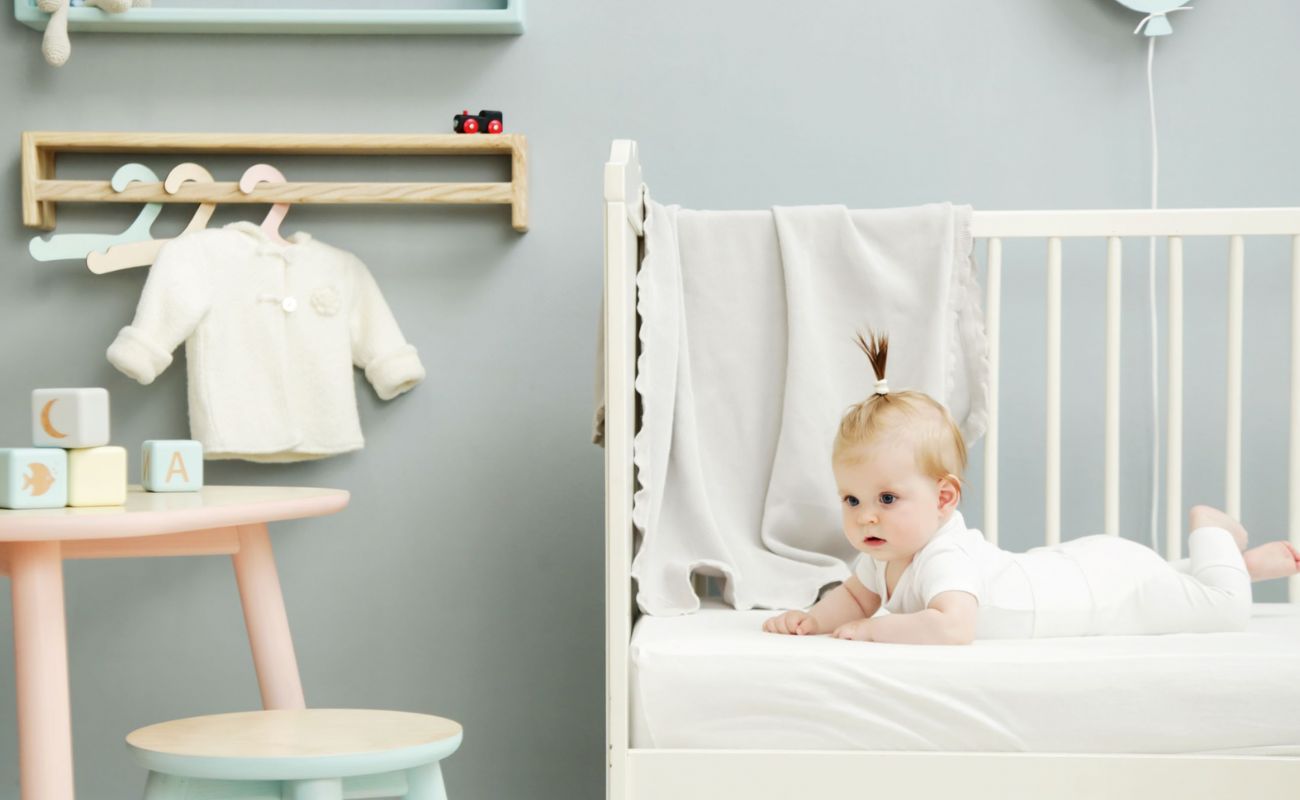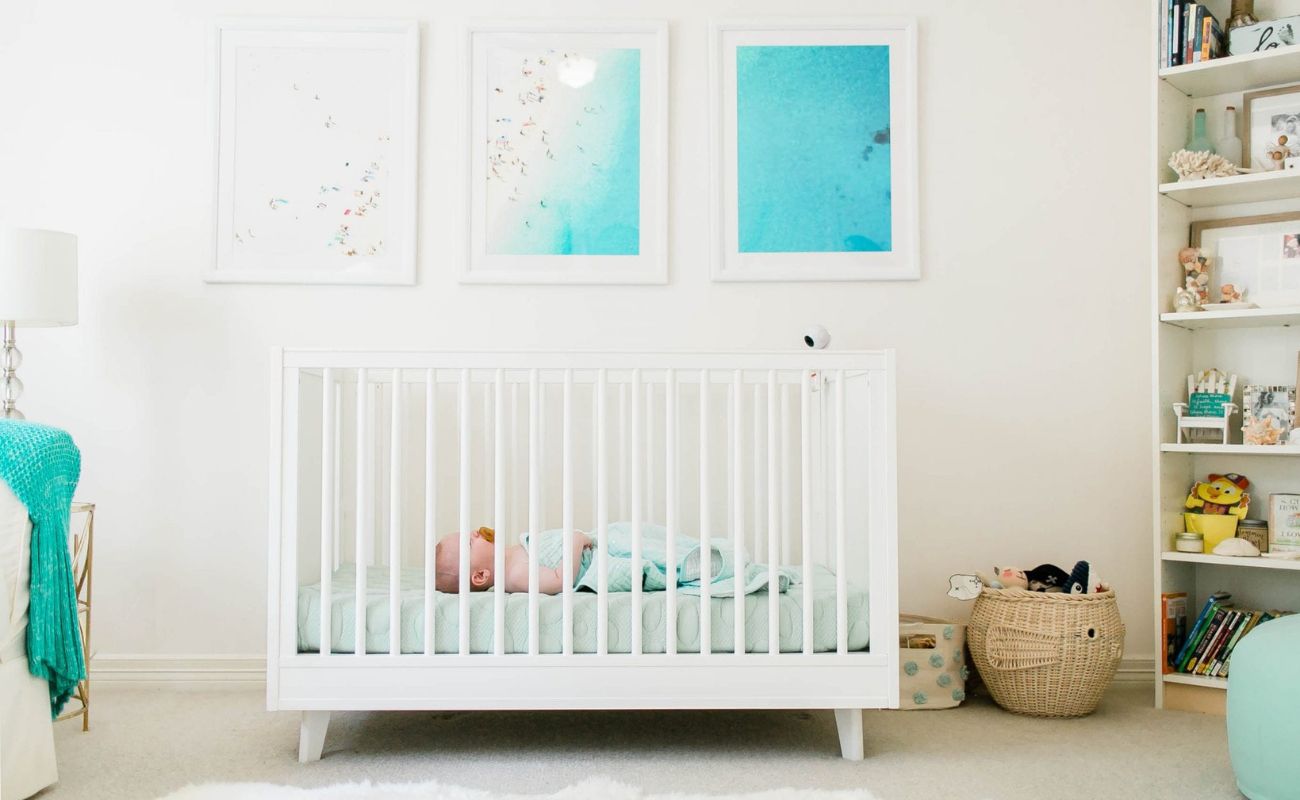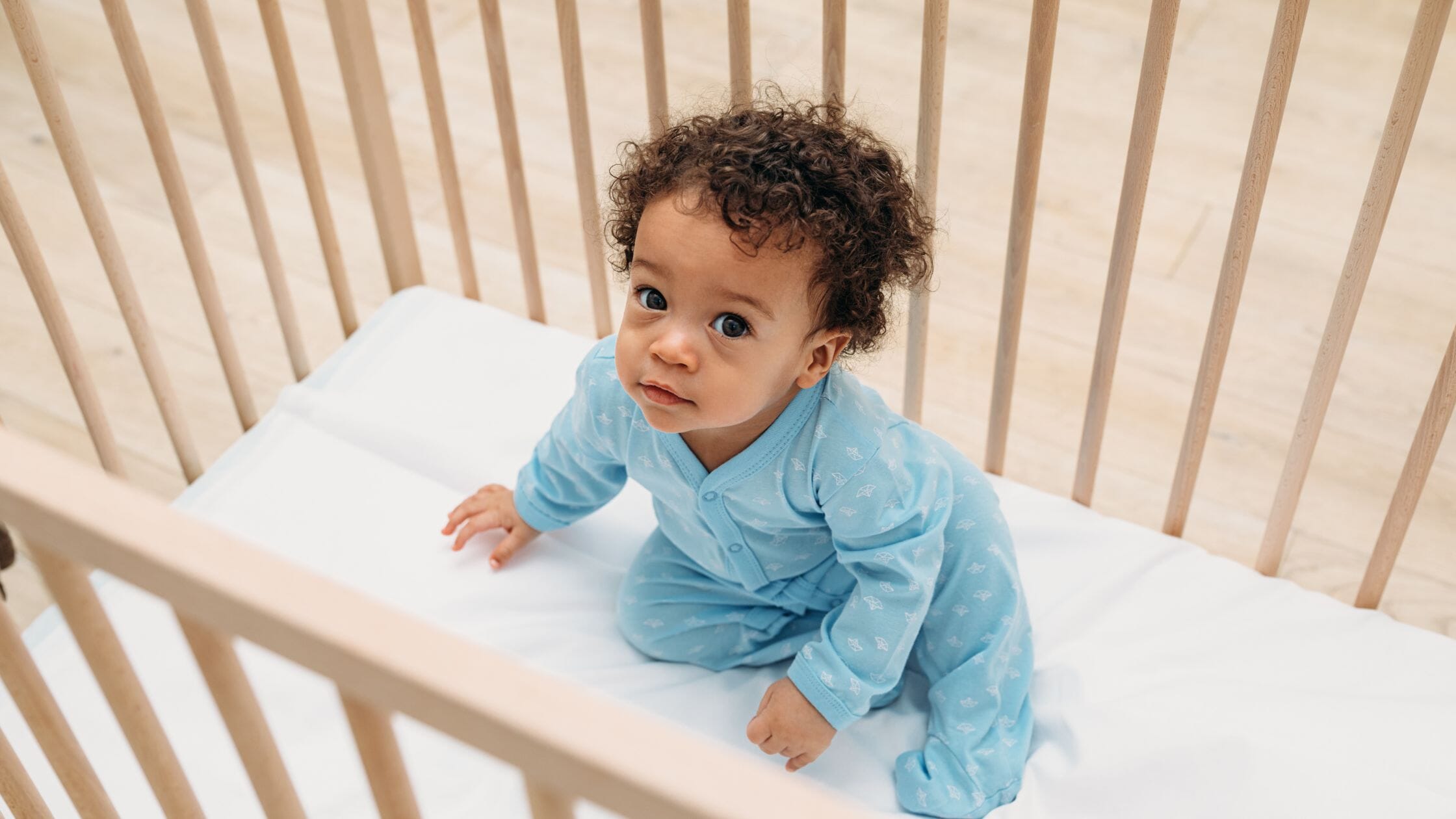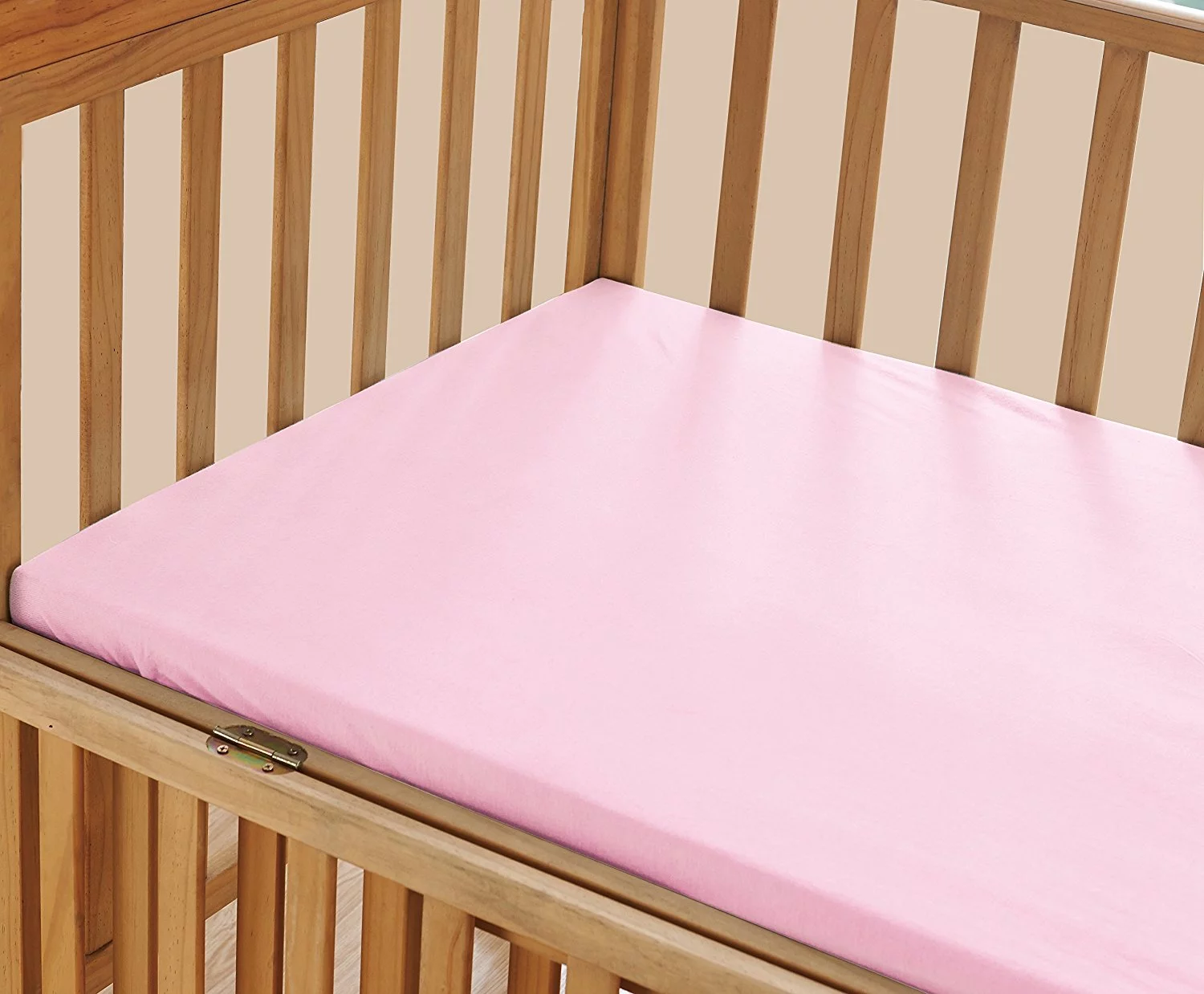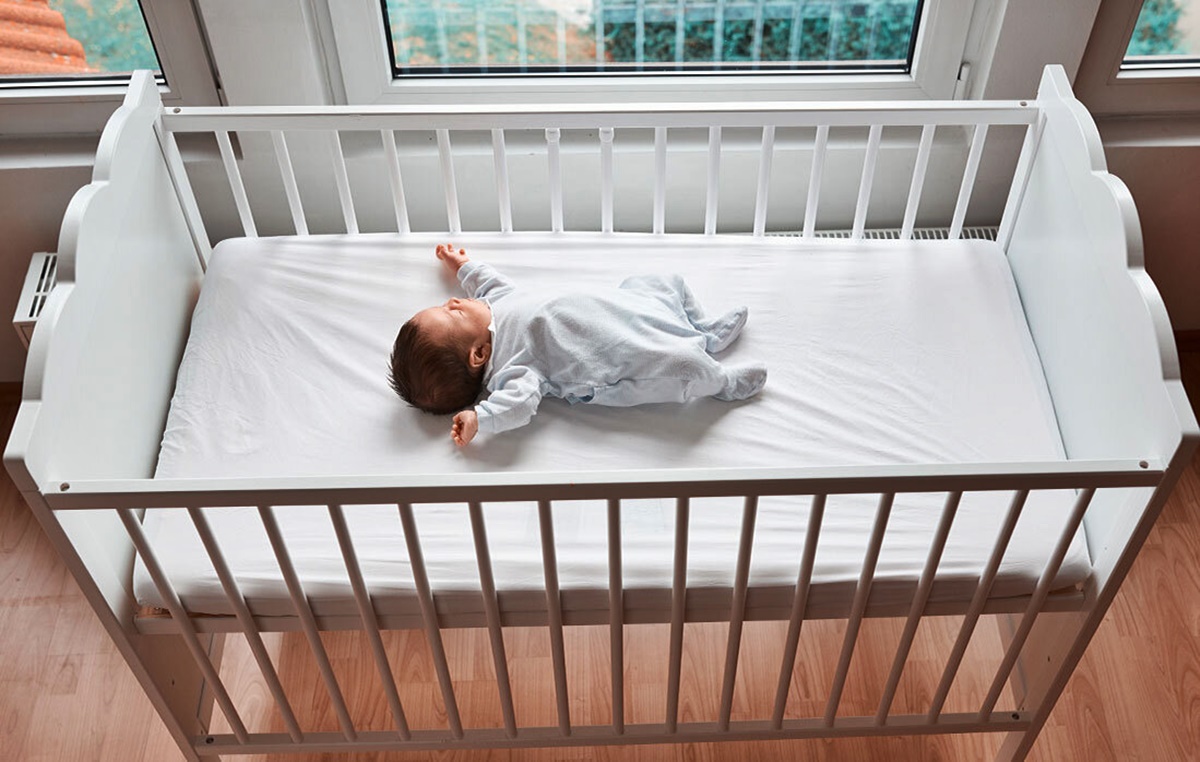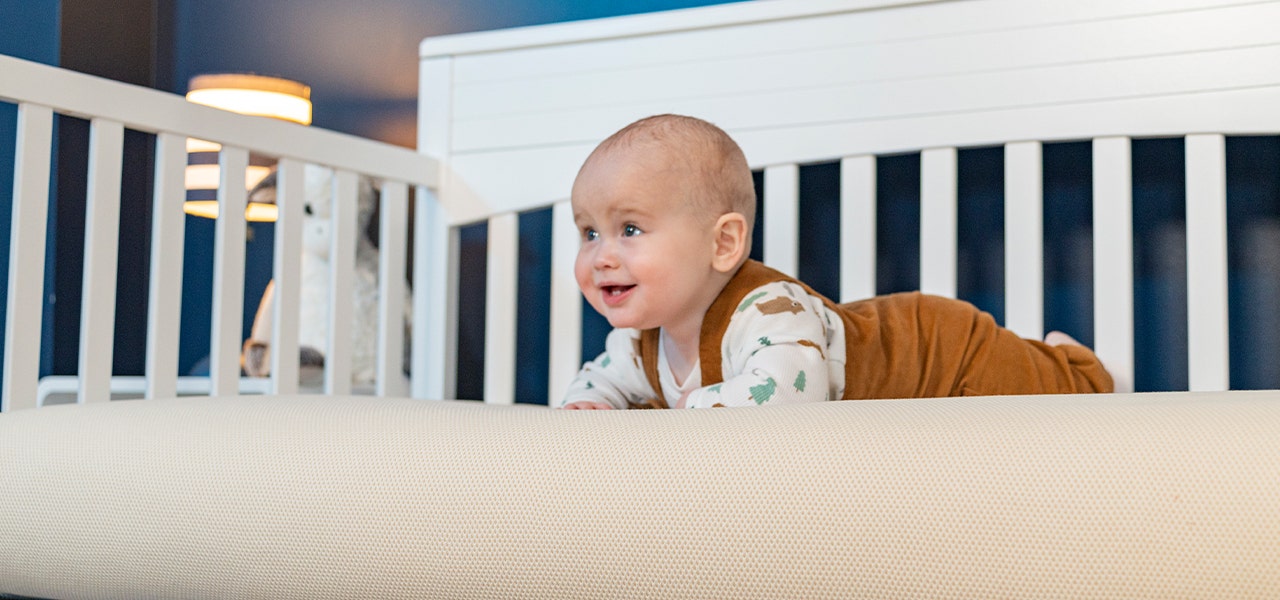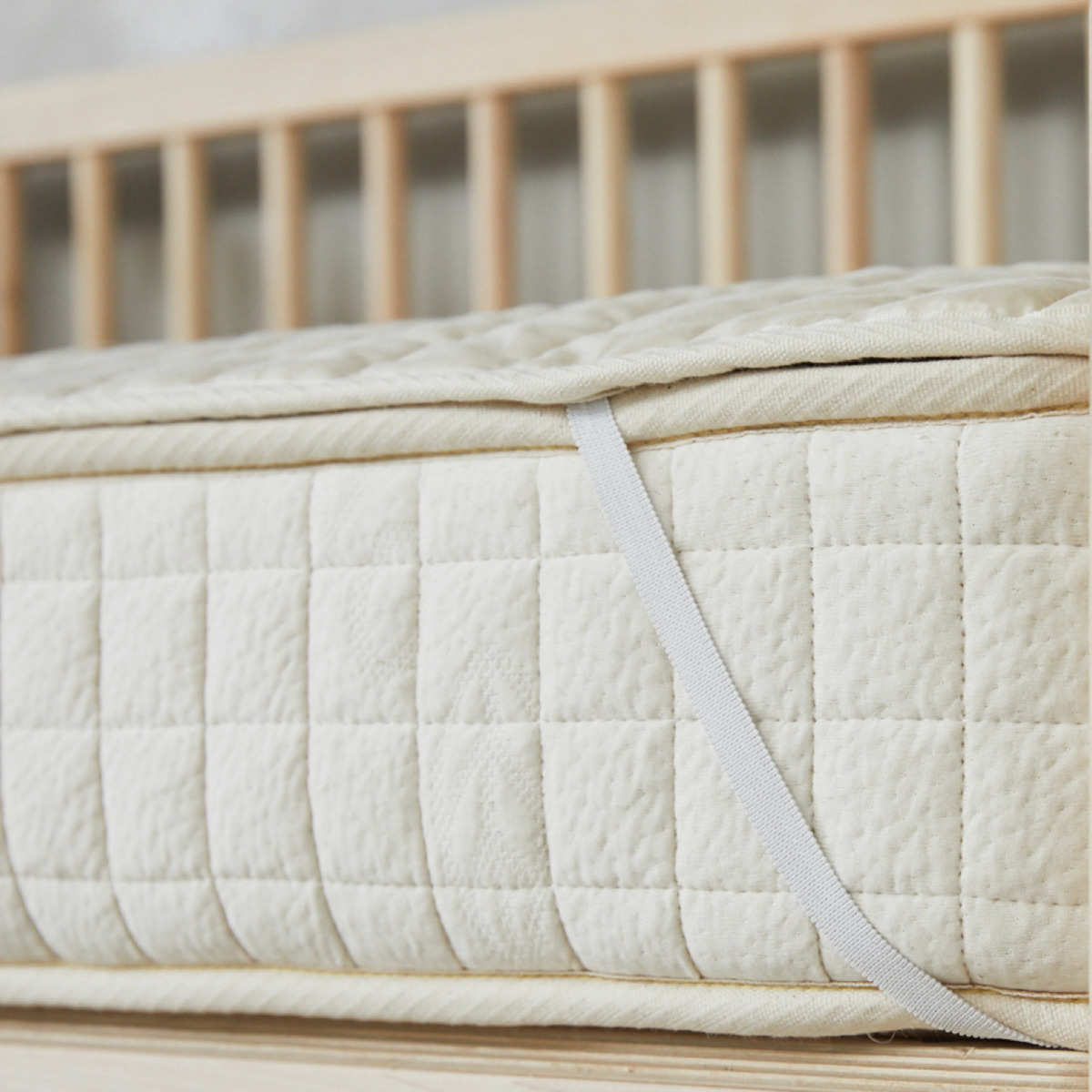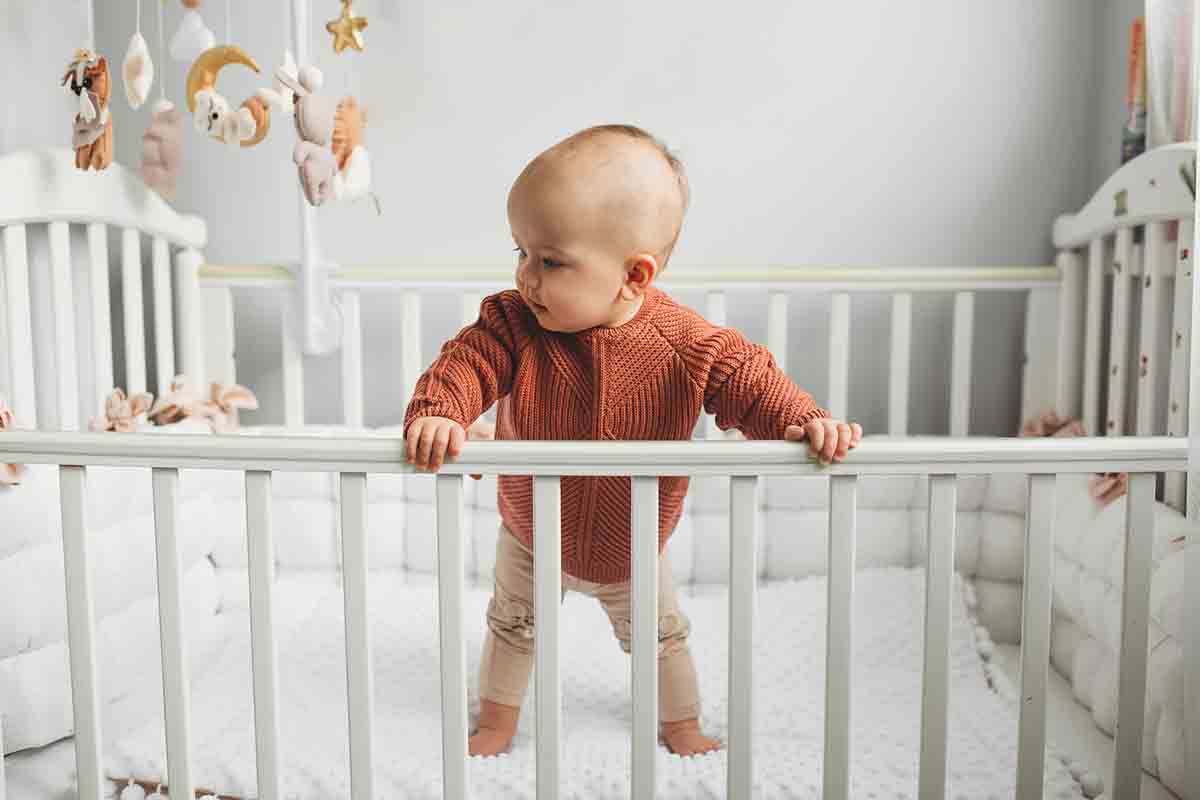Home>Furniture>Bedroom Furniture>What Is The Best Mattress For Baby Cribs
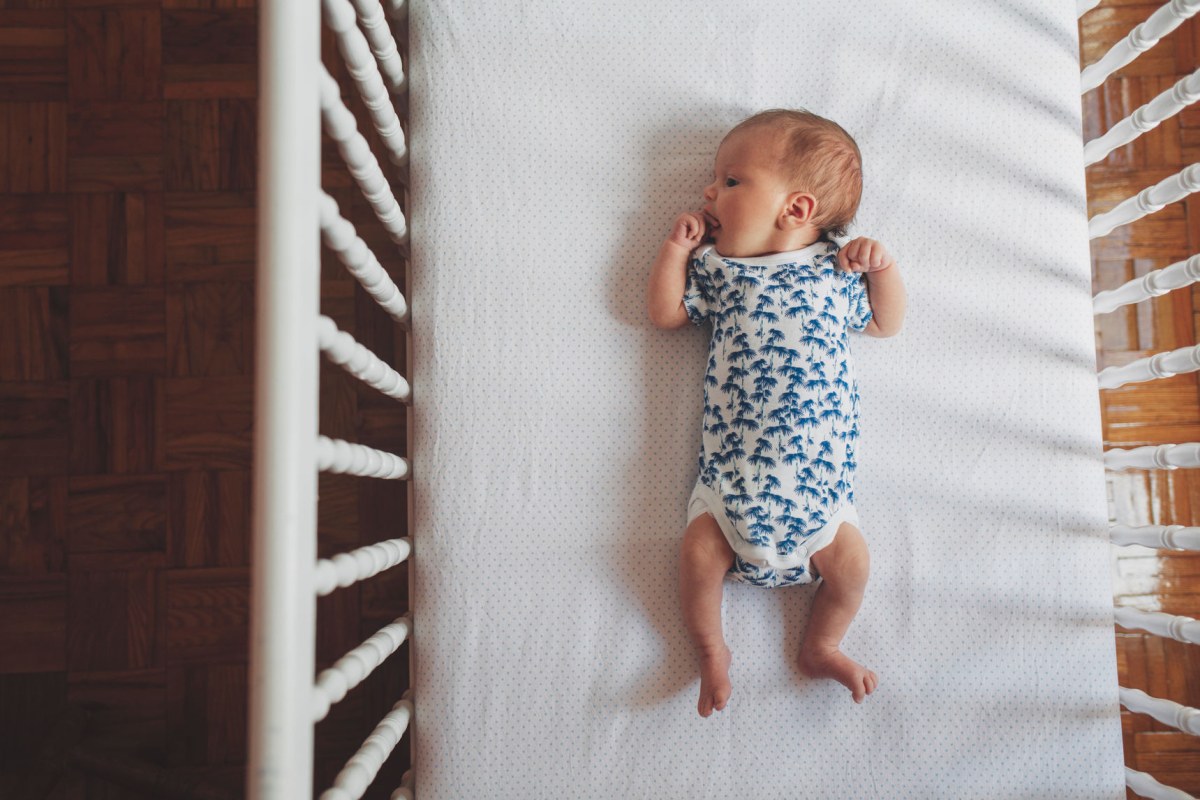

Bedroom Furniture
What Is The Best Mattress For Baby Cribs
Modified: January 9, 2024
Discover the best mattress for baby cribs and create a safe and comfortable sleeping environment with our selection of high-quality bedroom furniture for your little ones.
(Many of the links in this article redirect to a specific reviewed product. Your purchase of these products through affiliate links helps to generate commission for Storables.com, at no extra cost. Learn more)
Introduction
Welcome to the wonderful world of parenthood! As a new or expecting parent, there are so many decisions to make, from choosing the perfect baby name to creating a cozy and safe nursery. One of the most important decisions you’ll face is selecting the right mattress for your baby’s crib. A quality crib mattress is essential for providing a comfortable and safe space for your little one to sleep.
But with so many options available, how do you determine which is the best mattress for baby cribs? In this article, we’ll explore the importance of choosing the right mattress, factors to consider when making your selection, and the different types of mattresses available in the market. We’ll also discuss safety standards and provide tips to ensure a safe sleep environment for your baby.
So, let’s dive in and discover how you can provide the perfect sleep surface for your precious bundle of joy!
Key Takeaways:
- Choose a firm, hypoallergenic, and waterproof crib mattress to ensure your baby’s safety, comfort, and healthy sleep environment. Consider factors like material, durability, and certifications to make an informed decision.
- Prioritize safety by following essential tips, such as placing your baby on their back to sleep, avoiding loose bedding, and maintaining a comfortable room temperature. Regularly inspect the crib and mattress for wear or damage to ensure a secure sleep environment.
Importance of Choosing the Right Mattress for Baby Cribs
When it comes to your baby’s sleep, the mattress plays a vital role in providing comfort, support, and safety. Here are a few reasons why choosing the right mattress for baby cribs is so important:
- Comfort: Babies spend a significant amount of time sleeping, so it’s crucial to provide them with a comfortable surface to rest on. A good mattress helps support their developing bodies, ensures proper spinal alignment, and promotes restful and rejuvenating sleep.
- Safety: Safety is a top priority for any parent, and the crib mattress plays a crucial role in creating a safe sleep environment for your baby. The right mattress should be firm enough to prevent suffocation or mattress-related accidents. It should also fit snugly into the crib without any gaps that could pose a risk to your little one’s safety.
- Hygiene: Babies are prone to accidents and spills, so it’s important to choose a mattress that is easy to clean and maintain. Look for mattresses with removable, machine-washable covers or waterproof features to combat spills, stains, and odors.
- Longevity: Investing in a high-quality crib mattress can save you money in the long run. A durable and well-constructed mattress will not only provide comfort and safety for your baby but can also be used for subsequent siblings or converted into a toddler bed.
- Allergies: Babies have delicate respiratory systems, and some may be more susceptible to allergens or irritants. Choosing a hypoallergenic mattress can help minimize the risk of allergic reactions, providing a healthier sleeping environment for your baby.
By carefully considering these factors and selecting the right mattress for your baby’s crib, you can help ensure that your little one enjoys a comfortable and safe sleep environment throughout their early years.
Factors to Consider When Choosing a Baby Crib Mattress
Choosing a baby crib mattress can seem overwhelming with the abundance of options available. To help you make an informed decision, here are some key factors to consider:
- Safety: Safety is the most important consideration when selecting a crib mattress. Look for mattresses that meet safety standards and regulations. Ensure that the mattress fits securely in the crib without any gaps where your baby could get trapped. Avoid mattresses with excessive padding or softness, as they can increase the risk of suffocation.
- Size and Fit: The mattress should fit snugly in the crib with no more than two fingers’ width between the mattress and the crib frame. A properly fitting mattress prevents your baby from getting wedged between the mattress and the crib, reducing the risk of injury.
- Material: Baby crib mattresses are available in various materials, including foam, innerspring, and organic options. Each material has its own set of benefits and considerations. Foam mattresses are lightweight and affordable, innerspring mattresses provide excellent support, and organic mattresses are made from natural and non-toxic materials.
- Firmness: A firm mattress is essential for infant safety and proper development. Soft or plush mattresses can pose a suffocation risk, as a baby’s face may sink into the mattress. Check for the firmness of the mattress by pressing on its center and edges; it should quickly regain its shape.
- Waterproof and Breathable: Babies are prone to diaper leaks and spills, so it’s beneficial to choose a mattress with a waterproof or water-resistant cover. This feature helps protect the mattress from stains and odors. Additionally, opting for a breathable mattress cover promotes airflow and reduces the risk of overheating.
- Hypoallergenic: If your baby has allergies or sensitive skin, consider a hypoallergenic mattress. These mattresses are designed to minimize the presence of allergens such as dust mites, mold, and pet dander, creating a healthier sleep environment for your little one.
- Durability: Look for a mattress that is durable and built to withstand the test of time. A long-lasting mattress can be used for multiple children or repurposed for a toddler bed, making it a worthwhile investment.
- Budget: Determine your budget range and explore options within that range. Keep in mind that a higher price tag doesn’t always translate to better quality, so be sure to do your research and read reviews before making a final decision.
By considering these factors and prioritizing your baby’s safety and comfort, you can confidently choose the perfect crib mattress that meets your needs and preferences.
Types of Mattresses for Baby Cribs
When it comes to choosing a mattress for your baby’s crib, there are several types available, each with its own unique features and benefits. Let’s explore the most common types:
- Foam Mattresses: Foam mattresses are a popular and affordable choice for baby cribs. They are usually made from polyurethane foam and provide a lightweight and comfortable sleeping surface for infants. Foam mattresses offer excellent support and firmness, promoting proper spinal alignment. Look for high-density foam mattresses for enhanced durability and longevity.
- Innerspring Mattresses: Innerspring mattresses are constructed with coiled springs and layers of padding for support and comfort. These mattresses provide a firm sleeping surface and are known for their durability. Innerspring mattresses often have additional features such as hypoallergenic covers or dual-sided firmness options for infants and toddlers.
- Organic Mattresses: Organic crib mattresses are becoming increasingly popular among eco-conscious parents. These mattresses are made from natural and non-toxic materials, such as organic cotton, wool, or natural latex. They are free from harmful chemicals, dyes, and synthetic materials, providing a healthier sleep environment for babies. Organic mattresses are also hypoallergenic and offer excellent breathability.
When choosing the type of mattress for your baby’s crib, consider factors such as durability, comfort, and your personal preferences regarding materials and eco-friendliness. Ensure that the mattress meets safety standards and fits snugly in the crib.
It’s important to note that every baby is different, and what works for one may not work for another. Take the time to research and read reviews to find the best option that suits your baby’s needs and provides a comfortable and safe sleep surface.
Foam Mattresses
Foam mattresses are a popular choice for baby cribs due to their affordability, lightweight nature, and comfort. They are made from polyurethane foam, which provides adequate support for your baby’s growing body. Here are some key features and benefits of foam mattresses:
- Comfort: Foam mattresses offer a comfortable sleeping surface for your baby. The foam conforms to their body, providing optimal support and helping to relieve pressure points. This can contribute to a more restful and peaceful sleep for your little one.
- Firmness: One of the most important factors to consider when choosing a crib mattress is its firmness. Foam mattresses are known for their proper firmness levels, which ensure that your baby’s face won’t sink into the mattress, reducing the risk of suffocation.
- Lightweight and Easy to Handle: Foam mattresses are lightweight and easy to handle, making it convenient to change crib sheets or position the mattress within the crib. This can be especially beneficial for parents who may need to lift the mattress frequently.
- Affordable: Foam mattresses are generally more budget-friendly compared to other types of crib mattresses. They offer a cost-effective solution without compromising on quality and comfort.
- Durability: High-density foam mattresses are known for their durability, meaning they can withstand the wear and tear of your baby’s early years. Look for foam mattresses with a high-density rating to ensure long-lasting performance.
- Hypoallergenic: Foam mattresses can be a good option for babies with allergies or sensitive skin. They are often hypoallergenic and resistant to allergens such as dust mites and mold, creating a healthier sleep environment for your baby.
When purchasing a foam mattress for your baby’s crib, it’s important to consider factors such as thickness, density, and the presence of a waterproof cover. Look for mattresses that meet safety standards and have a removable and washable cover for easy cleaning.
Keep in mind that while foam mattresses provide comfort and support, they may not have the same level of durability or natural materials as other options like organic mattresses. However, with proper care, a foam mattress can serve your baby well throughout their early years.
Read also: 9 Superior Baby Crib Mattress for 2024
Innerspring Mattresses
Innerspring mattresses are a popular choice for baby cribs, known for their durability and firm support. These mattresses are constructed with a system of coiled springs and layers of padding. Here are some key features and benefits of innerspring mattresses:
- Firmness and Support: Innerspring mattresses are designed to provide firm support for your baby. The coiled springs within the mattress help distribute their weight evenly and promote proper spinal alignment. This ensures that your baby maintains a comfortable and healthy sleep posture.
- Durability: Innerspring mattresses are known for their durability and long lifespan. The sturdy construction of the coiled springs and quality materials used in their padding contribute to their ability to withstand the wear and tear of your baby’s early years.
- Dual-Sided Firmness: Many innerspring mattresses come with dual-sided firmness, offering a supportive side for infants and a slightly softer side for toddlers as they grow. This feature allows you to use the mattress as your child transitions from a crib to a toddler bed.
- Enhanced Breathability: Innerspring mattresses provide better airflow compared to foam mattresses. The spaces between the coiled springs allow for increased ventilation, reducing the risk of overheating and promoting a cooler and more comfortable sleeping environment for your baby.
- Hypoallergenic Options: Some innerspring mattresses come with hypoallergenic features including covers that are resistant to allergens such as dust mites, mold, and bacteria. This can be beneficial for babies with allergies or sensitive skin.
- Edge Support: Innerspring mattresses often have reinforced edges, which provide stability and prevent sagging. This feature is especially useful as your baby starts to stand or move around the crib, offering extra support and safety.
When selecting an innerspring mattress for your baby’s crib, consider factors such as coil count, wire gauge, and the quality of the padding materials. Look for mattresses that meet safety standards and have a removable and washable cover for easy cleaning.
While innerspring mattresses may be slightly more expensive compared to foam mattresses, their durability and supportive nature make them a popular choice among parents. With proper care and maintenance, an innerspring mattress can provide a comfortable and safe sleep surface for your baby for years to come.
When choosing a mattress for a baby crib, look for one that is firm and fits snugly in the crib to reduce the risk of suffocation or Sudden Infant Death Syndrome (SIDS). Additionally, consider a mattress with a waterproof cover for easy cleaning.
Organic Mattresses
For parents who prioritize natural and non-toxic materials, organic crib mattresses are an excellent choice. These mattresses are made from organic and eco-friendly materials, offering a healthier and more sustainable sleep environment for your baby. Here are some key features and benefits of organic mattresses:
- All-Natural and Non-Toxic: Organic mattresses are made from natural and non-toxic materials such as organic cotton, wool, or natural latex. These materials are free from harmful chemicals, dyes, and synthetic materials, minimizing the risk of allergic reactions or respiratory irritations.
- Hypoallergenic: Organic mattresses are often hypoallergenic, meaning they are resistant to common allergens such as dust mites, mold, and bacteria. This can be particularly beneficial if your baby has allergies or sensitive skin.
- Breathability and Temperature Regulation: Organic materials such as cotton and wool have excellent breathability, allowing for better air circulation within the mattress. This helps regulate your baby’s body temperature, reducing the risk of overheating and creating a comfortable and safe sleep environment.
- Eco-Friendly and Sustainable: Organic mattresses are produced using sustainable methods and adhere to strict environmental standards. They are free from pesticides, herbicides, and harsh chemicals, making them a more environmentally friendly choice for conscious parents.
- Longevity and Durability: Organic mattresses are often well-crafted and designed to withstand the test of time. The high-quality materials used in their construction ensure that they retain their shape and support for an extended period.
- Regulated Certifications: Look for organic mattresses that have been certified by reputable organizations such as Global Organic Textile Standard (GOTS) or Global Organic Latex Standard (GOLS). These certifications provide assurance that the mattress meets stringent organic standards and quality requirements.
When choosing an organic mattress for your baby’s crib, consider factors such as the type and quality of organic materials used, as well as the certifications obtained by the manufacturer. Additionally, ensure that the mattress meets safety standards and has features like a waterproof cover or removable and washable covers for easy maintenance.
While organic mattresses may come with a higher price tag compared to other types, they offer the peace of mind of providing a natural, non-toxic, and eco-friendly sleep environment for your baby.
Waterproof and Breathable Mattress Covers
When it comes to selecting a mattress cover for your baby’s crib mattress, two key features to consider are waterproofness and breathability. Waterproof and breathable mattress covers are designed to protect the mattress from spills, stains, and odors while also ensuring a comfortable and safe sleep environment. Here’s why these features are important:
- Protection from Accidents: Babies are prone to diaper leaks, spit-up, and other accidents during sleep. A waterproof mattress cover acts as a barrier, preventing liquids from seeping into the mattress and causing damage. This helps extend the lifespan of the mattress and makes clean-up a breeze.
- Hygiene and Easy Maintenance: A waterproof cover keeps moisture from reaching the mattress, reducing the risk of mold, mildew, and bacteria growth. It also makes cleaning and maintenance easier by allowing you to simply wipe or wash the cover, keeping the sleep environment clean and fresh for your baby.
- Breathability and Airflow: Breathable mattress covers are designed to promote airflow and ventilation within the mattress. This helps regulate your baby’s body temperature and reduces the risk of overheating during sleep. Adequate airflow also contributes to a comfortable and dry sleep surface.
- Prevention of Allergens: Waterproof and breathable covers can offer protection against allergens such as dust mites and pet dander. By acting as a barrier, they prevent these particles from penetrating the mattress, creating a healthier sleep environment for babies with allergies or sensitivities.
- Comfort: Quality waterproof and breathable mattress covers are designed to be soft and comfortable for your baby to sleep on. They are often made from materials that are gentle on your baby’s skin, ensuring a cozy and pleasant sleeping experience.
- Convenience and Versatility: Many mattress covers come with features such as elasticized edges or zippered closures, making them easy to put on and take off for washing. Some covers are also designed to fit standard crib mattresses as well as toddler bed mattresses, allowing for extended use.
When selecting a waterproof and breathable mattress cover, make sure it is specifically designed for crib mattresses and fits snugly to prevent bunching or sliding. Look for covers that are made from breathable and non-toxic materials which are safe for your baby to sleep on.
Incorporating a waterproof and breathable mattress cover into your baby’s sleep environment not only protects the mattress but also ensures a hygienic, comfortable, and safe space for your little one to rest and grow.
Safety Standards for Baby Crib Mattresses
When choosing a crib mattress for your baby, safety should be the top priority. To ensure that the mattress meets the highest safety standards, it’s important to look for certain certifications and adhere to specific guidelines. Here are some safety standards to consider when selecting a baby crib mattress:
- Consumer Product Safety Improvement Act (CPSIA): The CPSIA is a regulation that sets safety standards for a wide range of consumer products, including crib mattresses. Look for mattresses that comply with the requirements outlined in this act to ensure that they are free from harmful chemicals and meet safety guidelines.
- ASTM International: The American Society for Testing and Materials (ASTM) develops and publishes voluntary standards for various products, including baby crib mattresses. ASTM F2933-19 is the current standard for crib mattresses, addressing safety and performance requirements such as flammability, mattress fit, labeling, and overall durability.
- Juvenile Products Manufacturers Association (JPMA) Certification: JPMA is an organization that provides certification for baby products, including crib mattresses. Look for mattresses that have JPMA certification, as it ensures that the product has undergone rigorous testing and meets industry safety standards.
- Firmness: It is essential to choose a firm crib mattress for your baby. The American Academy of Pediatrics (AAP) advises that a firm mattress reduces the risk of suffocation and helps maintain a safe sleep environment. Avoid mattresses that are too soft or plush, as they increase the risk of the baby’s face sinking into the mattress and obstructing their breathing.
- Fit: The mattress should fit snugly within the crib without any gaps around the edges. This prevents the baby from getting trapped or wedged between the mattress and the crib, reducing the risk of injury. It is recommended to follow the specific guidelines provided by the crib manufacturer regarding mattress size and fit.
- Mattress Cover: Ensure that the mattress cover is hypoallergenic, breathable, and easily removable for cleaning. A waterproof cover can protect the mattress from spills and accidents, maintaining its hygiene and preventing the growth of mold or bacteria.
- Quality and Construction: Look for well-constructed crib mattresses made from high-quality materials. Check for features such as reinforced edges, sturdy stitching, and durable construction to ensure the mattress will withstand the test of time and maintain its safety and support over the years.
By choosing a crib mattress that meets these safety standards and guidelines, you can have peace of mind knowing that your baby is sleeping on a safe and secure surface.
Read more: What Is A Crib Mattress Size
Tips for Ensuring a Safe Sleep Environment for Babies
Creating a safe sleep environment is crucial to promote your baby’s well-being and reduce the risk of sleep-related accidents. Here are some essential tips to help you ensure a safe sleep environment for your baby:
- Back to Sleep: Always place your baby on their back to sleep in a crib that meets the current safety standards. This position reduces the risk of Sudden Infant Death Syndrome (SIDS).
- Firm Mattress: Choose a firm crib mattress that fits snugly into the crib. A firm mattress prevents suffocation and keeps your baby safe while they sleep.
- No Loose Bedding: Avoid using loose bedding such as blankets, pillows, or stuffed animals in the crib. These items can pose a suffocation hazard. Instead, use a fitted sheet that securely covers the mattress.
- Sleep Sack or Wearable Blanket: Consider using a sleep sack or wearable blanket that keeps your baby warm without the need for loose blankets. This reduces the risk of suffocation and keeps them comfortable throughout the night.
- Avoid Overheating: Keep the room temperature at a comfortable level (between 68-72°F or 20-22°C) to prevent your baby from overheating during sleep. Dress them in appropriate clothing for the climate.
- No Smoking: Keep your baby’s sleep environment smoke-free. Secondhand smoke increases the risk of SIDS and other respiratory issues.
- Monitor Room Temperature: Use a thermometer or wearable monitor to keep track of the room temperature and ensure it remains within a safe range.
- Sleep in the Same Room: The American Academy of Pediatrics (AAP) recommends room-sharing with your baby, but not bed-sharing, for the first six to 12 months. This promotes safe sleep practices and allows for easy monitoring.
- Avoid Crib Clutter: Keep the crib free from excessive clutter, including toys, crib bumpers, and other unnecessary items that can pose a suffocation or entrapment risk.
- Supervised Tummy Time: While most sleep should be on the back, provide supervised tummy time during the day to promote healthy development and strengthen your baby’s neck and upper body muscles.
- Regularly Inspect the Crib: Check the crib regularly for any loose or broken parts that could pose a safety hazard. Ensure that the mattress is correctly positioned and fits securely within the crib.
Remember, creating a safe sleep environment is crucial for your baby’s well-being. By following these tips and adhering to safety guidelines, you can provide your baby with a secure and comfortable space for restful sleep.
Conclusion
Choosing the right mattress for your baby’s crib is an important decision that can greatly impact their comfort, safety, and overall well-being. By considering factors such as firmness, material, safety standards, and your baby’s individual needs, you can make an informed choice that provides the perfect sleep surface for your little one.
Whether you opt for a foam mattress for its affordability and comfort, an innerspring mattress for its durability and support, or an organic mattress for its natural and non-toxic materials, each type has its unique benefits. It’s important to prioritize safety and ensure that the mattress meets the necessary certifications and guidelines.
Additionally, incorporating a waterproof and breathable mattress cover can further enhance the safety and hygiene of your baby’s sleep environment, protecting the mattress from spills and accidents while promoting airflow and comfort.
Remember to follow essential safety tips, such as placing your baby on their back to sleep, avoiding loose bedding, and maintaining a comfortable room temperature. These measures significantly reduce the risk of sleep-related accidents and promote a safe sleep environment for your baby.
As your baby grows and develops, routinely inspect the crib and mattress for any signs of wear or damage, and ensure that the mattress continues to meet safety standards as recommended by organizations such as CPSIA, ASTM International, and JPMA.
With careful selection, regular maintenance, and adherence to safety guidelines, you can provide your baby with a comfortable and safe sleep environment that supports their growth, development, and restorative sleep.
Frequently Asked Questions about What Is The Best Mattress For Baby Cribs
Was this page helpful?
At Storables.com, we guarantee accurate and reliable information. Our content, validated by Expert Board Contributors, is crafted following stringent Editorial Policies. We're committed to providing you with well-researched, expert-backed insights for all your informational needs.
